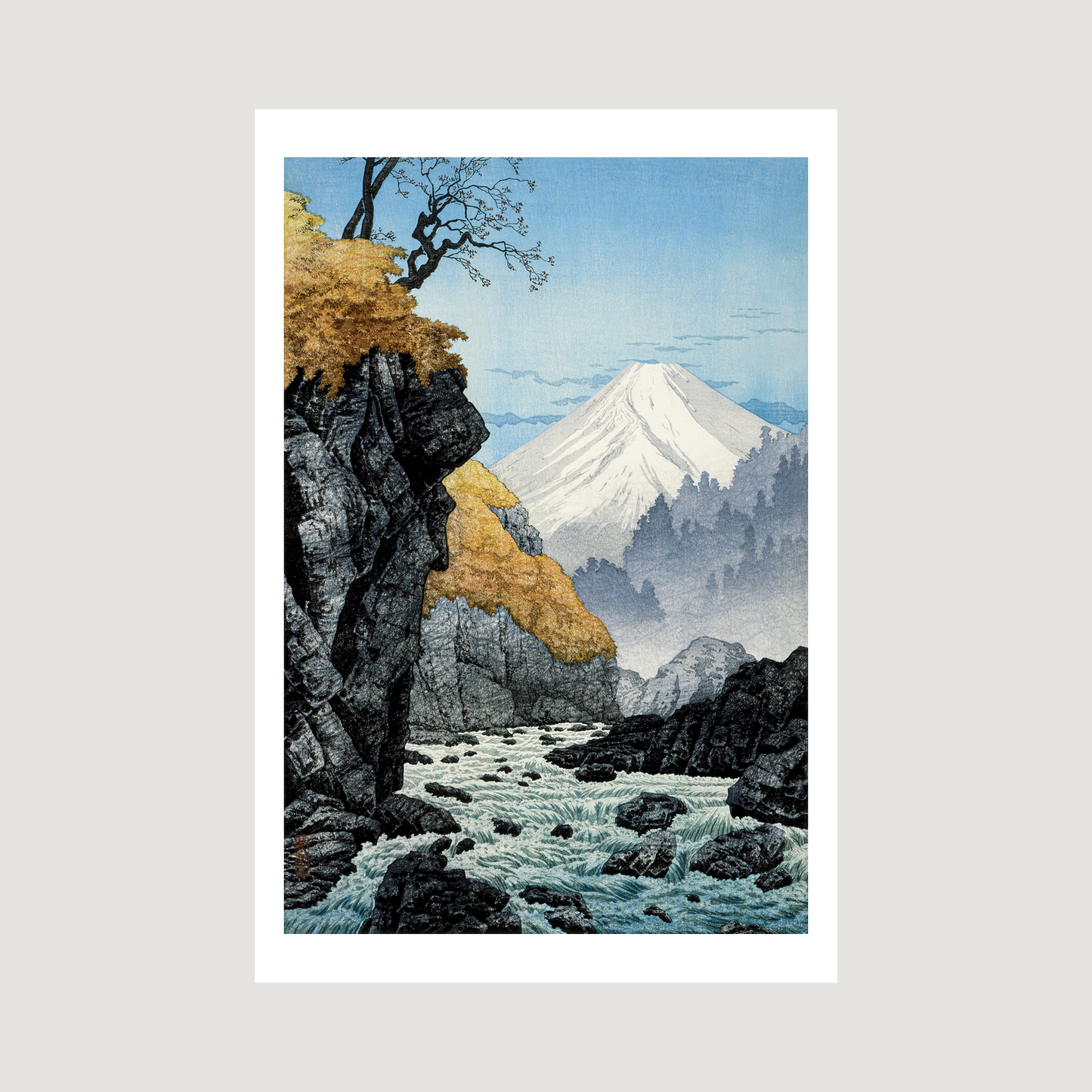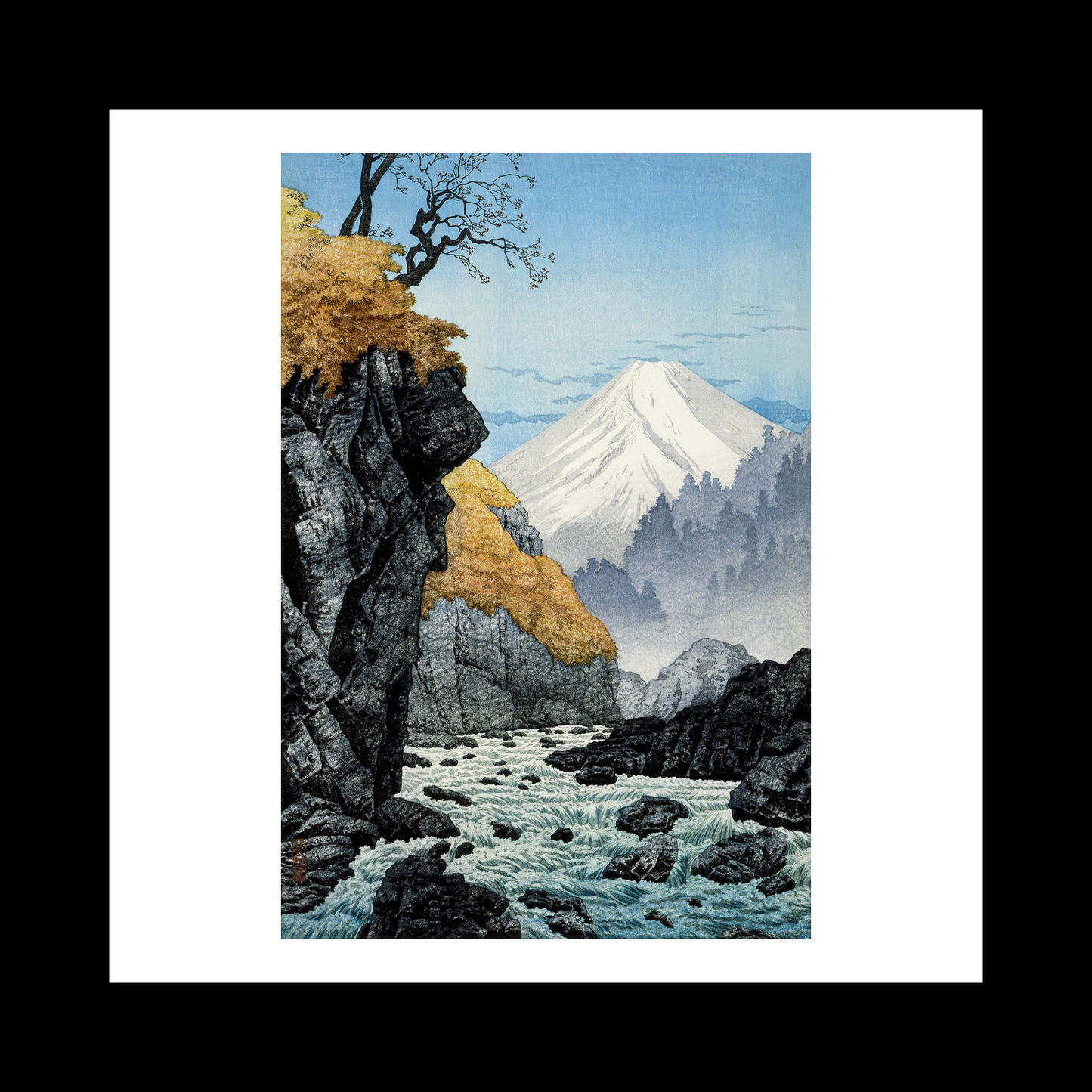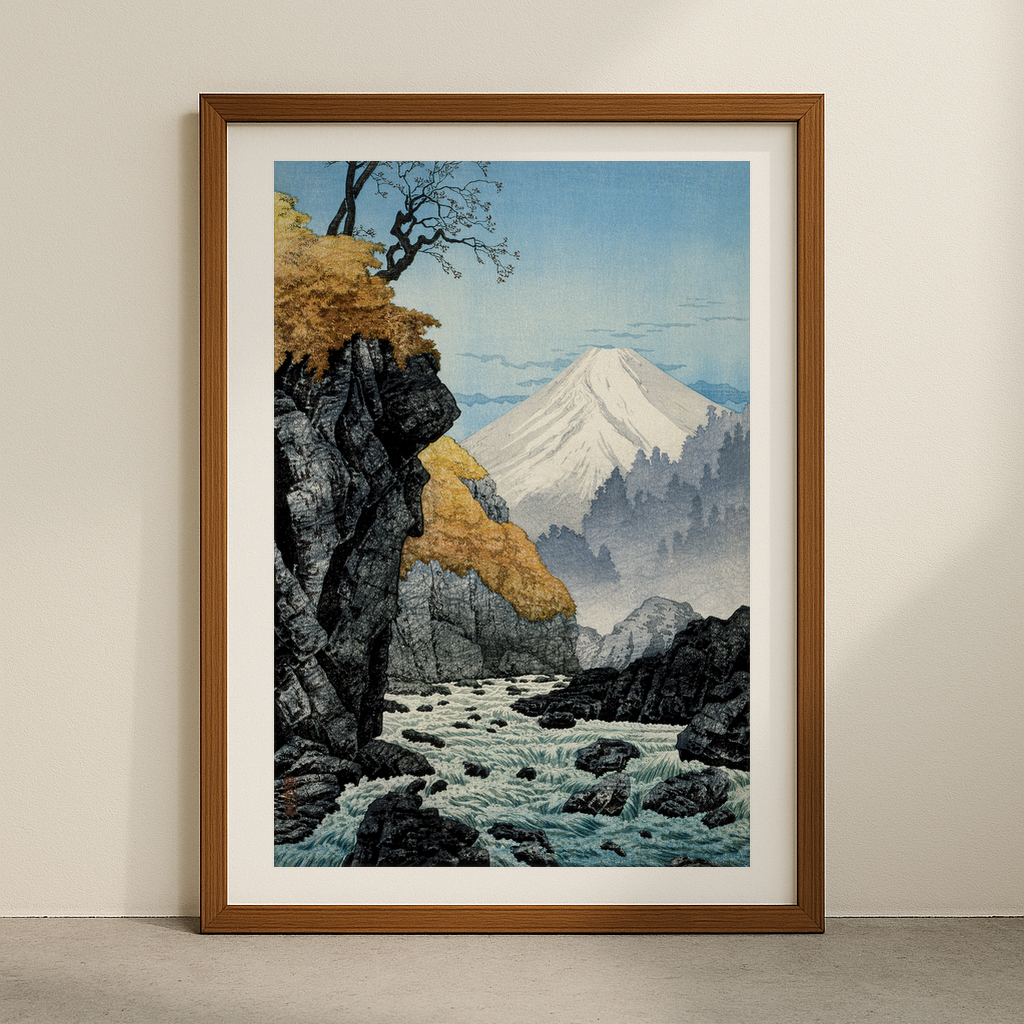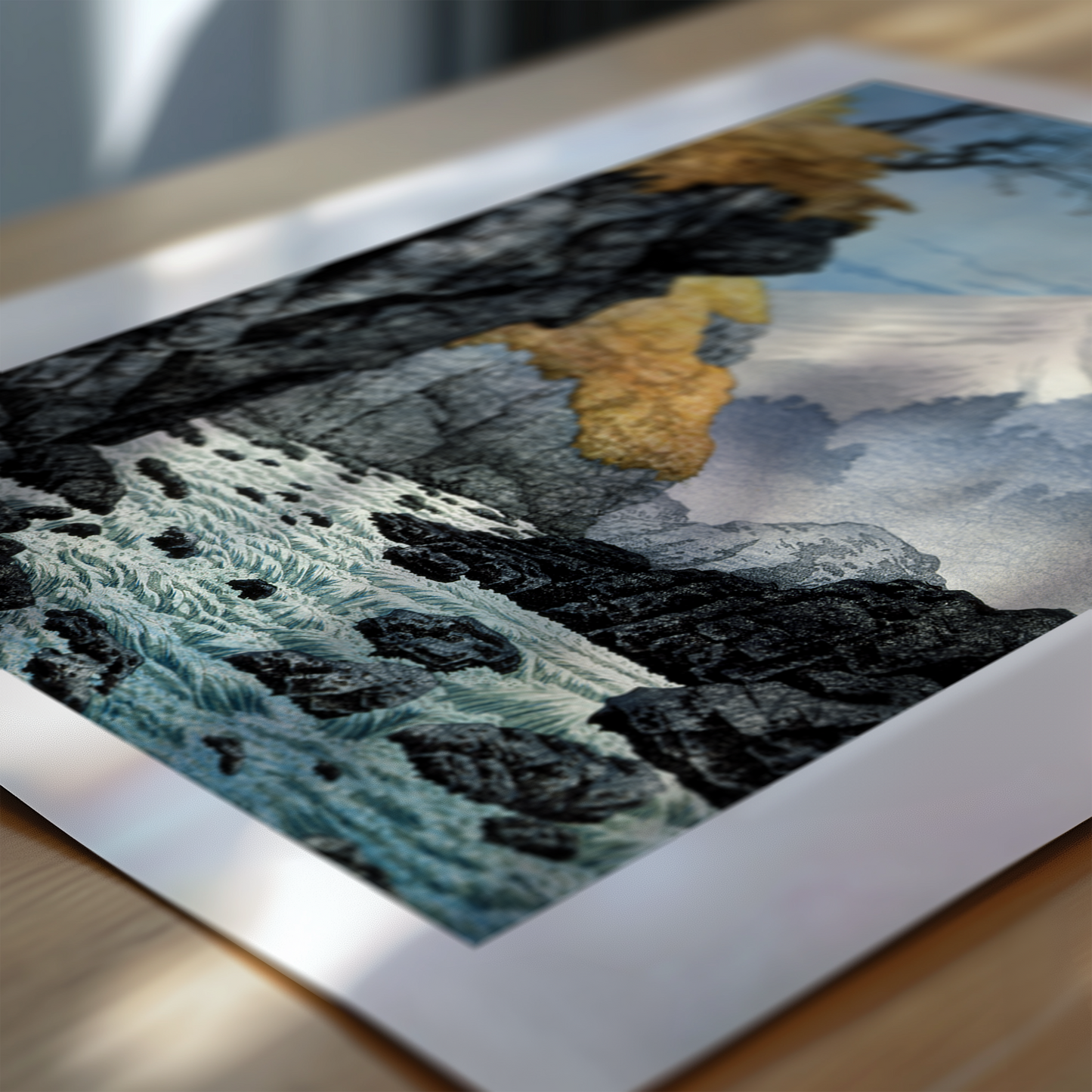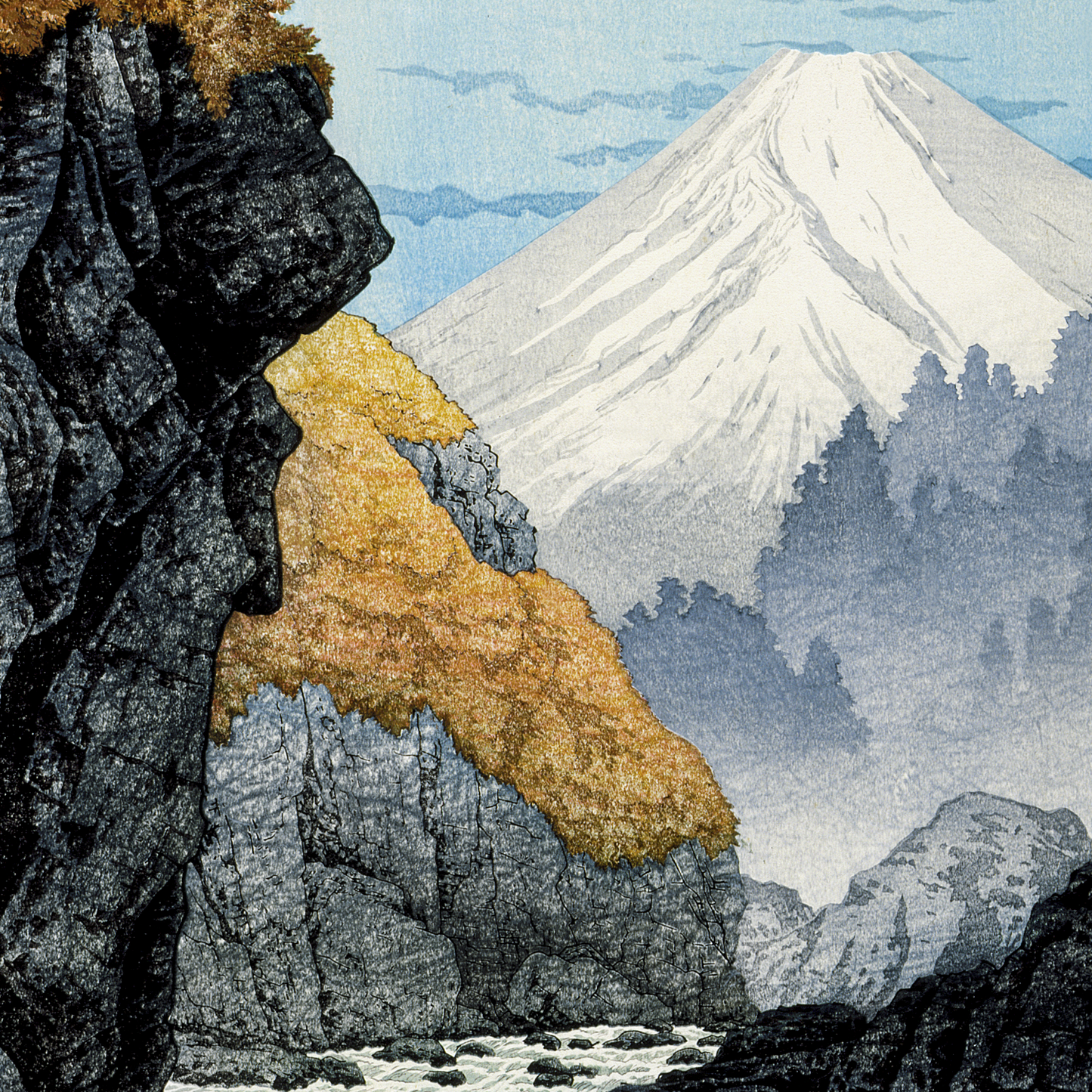1
/
of
6
Foot of Mount Ashitaka
Foot of Mount Ashitaka
Regular price
£12.45 GBP
Regular price
Sale price
£12.45 GBP
Taxes included.
Quantity
Couldn't load pickup availability
"Foot of Mount Ashitaka" (1932) by Hiroaki Takahashi showcases the artist's masterful command of the shin-hanga style, a 20th-century revival of traditional Japanese woodblock printing. The composition captures the majestic Mount Ashitaka in Shizuoka Prefecture, with delicate gradations of colour creating depth and atmosphere. The foreground features traditional Japanese dwellings nestled among lush vegetation, while the mountain's imposing silhouette dominates the background, partially shrouded in mist.
Takahashi, who worked under the art name 'Shotei', was particularly skilled at depicting atmospheric conditions and seasonal changes in his landscapes. This print demonstrates his expertise in bokashi (gradation) technique, creating subtle transitions between colours that capture the ethereal quality of early morning or late afternoon light. The artist's choice of perspective places viewers at ground level, emphasising the mountain's grandeur while maintaining an intimate connection with the rural scene.
The work reflects a pivotal moment in Japanese art history, when traditional woodblock printing was adapting to modern sensibilities and Western influences. Unlike traditional ukiyo-e prints, shin-hanga artists like Takahashi collaborated closely with carvers and printers, incorporating new techniques and materials. This print exemplifies how Takahashi balanced artistic innovation with classical Japanese aesthetics, creating landscapes that resonated with both domestic and international audiences during a period of rapid modernisation in Japan.
The print's serene composition and careful attention to natural elements reveal Takahashi's deep appreciation for Japan's rural landscapes and their relationship with sacred mountains, a theme that remained central to his artistic practice throughout his career.
View full details
Takahashi, who worked under the art name 'Shotei', was particularly skilled at depicting atmospheric conditions and seasonal changes in his landscapes. This print demonstrates his expertise in bokashi (gradation) technique, creating subtle transitions between colours that capture the ethereal quality of early morning or late afternoon light. The artist's choice of perspective places viewers at ground level, emphasising the mountain's grandeur while maintaining an intimate connection with the rural scene.
The work reflects a pivotal moment in Japanese art history, when traditional woodblock printing was adapting to modern sensibilities and Western influences. Unlike traditional ukiyo-e prints, shin-hanga artists like Takahashi collaborated closely with carvers and printers, incorporating new techniques and materials. This print exemplifies how Takahashi balanced artistic innovation with classical Japanese aesthetics, creating landscapes that resonated with both domestic and international audiences during a period of rapid modernisation in Japan.
The print's serene composition and careful attention to natural elements reveal Takahashi's deep appreciation for Japan's rural landscapes and their relationship with sacred mountains, a theme that remained central to his artistic practice throughout his career.

